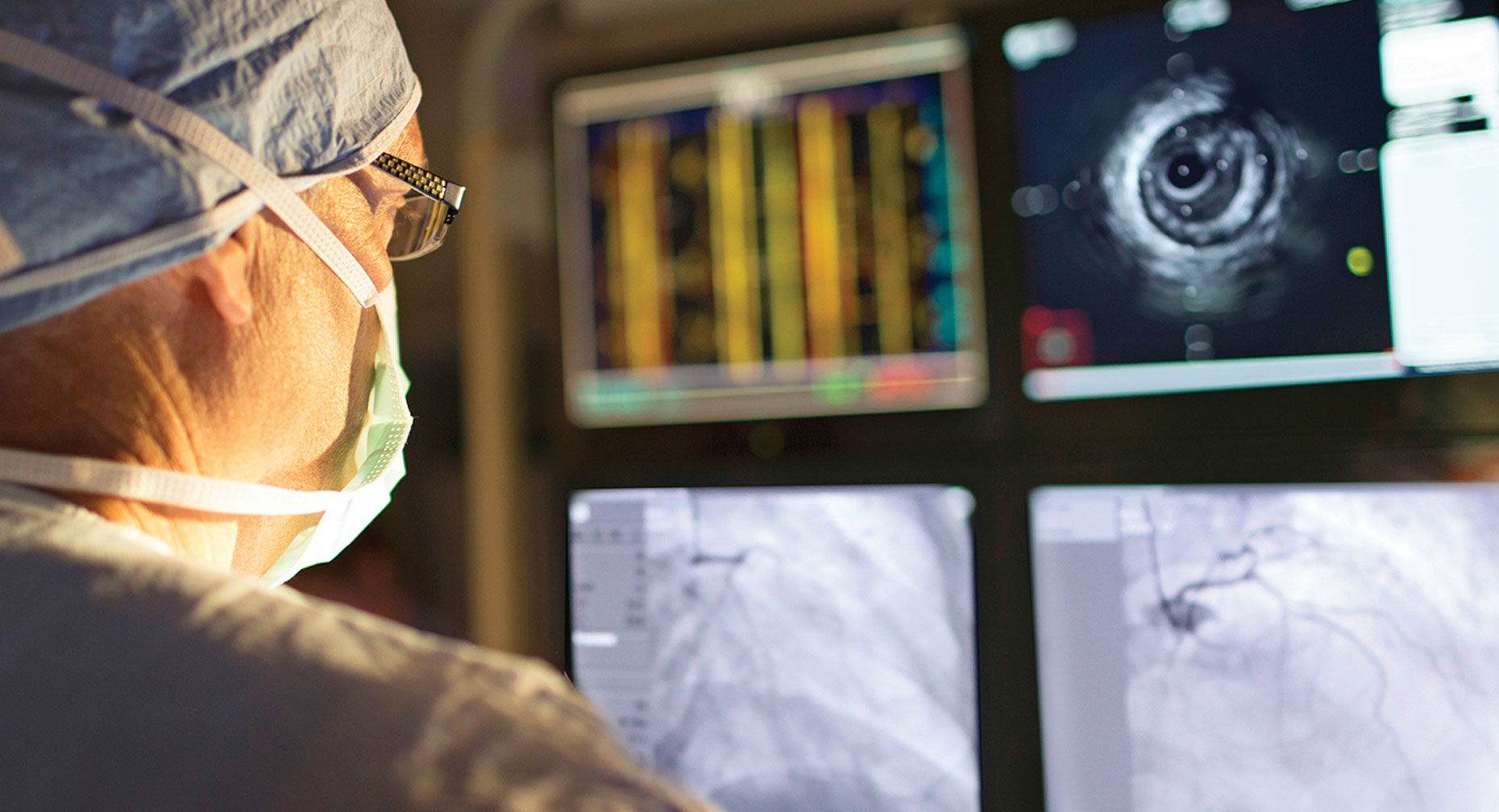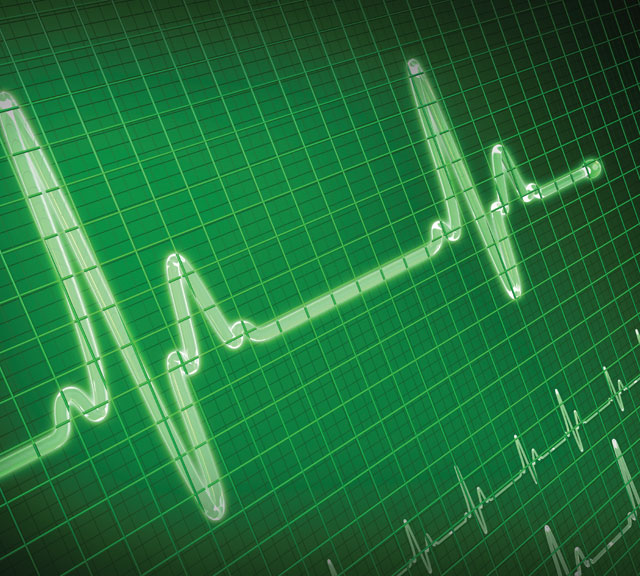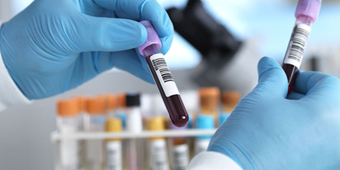Be Still, My Heart: The Latest In Arrhythmia Treatment

Answer a few questions and we'll provide you with a list of primary care providers that best fit your needs.
The smooth, steady rhythm of our hearts beating is something we take for granted. The heart’s electrical system usually functions quietly and effortlessly while we go about the business of our days.
But sometimes, the electrical system is impaired and the rhythm goes awry. This common condition, known as arrhythmia, is usually harmless, but in some people it can be serious or even life-threatening.
If you have arrhythmia, your heart may beat too fast (tachycardia), too slow (bradycardia), or irregularly. The most common form is atrial fibrillation, or A-Fib, which causes rapid, irregular beating or quivering of the heart's upper chambers. Blood may pool and clot inside the heart, increasing the risk for heart attack and stroke.
A less common, but more deadly, type of arrhythmia is ventricular fibrillation, or VFib. During VFib, the heart’s lower chambers quiver and the heart can't pump any blood, causing cardiac arrest. VFib leads to death unless treated right away with an electrical shock to the heart (this is the life-saving procedure you often see on TV, known as defibrillation).
Restoring a Regular Rhythm
“Electrophysiologists treat abnormal heart rhythms in several different ways,” explains Kevin Kravitz, MD, cardiovascular specialist and electrophysiologist. Some arrhythmias are harmless and require no treatment. But if it looks like arrhythmia is putting your health at risk, there are several options for treatment. Dr. Kravitz discusses treatments for arrhythmias.
Click play to watch the video or read video transcript.
Treatment options include:
Medication
Beta blockers, or anti-arrhythmics, are medications that can return your heart rate to a normal rhythm. Others, like calcium channel blockers, digoxin (digitalis), and amiodarone can help slow your heart down.
Blood-thinning (anti-coagulant) medication is often used to prevent or treat the blood clots that might form as a result of arrhythmia.
Cardioversion 
There are two types of cardioversion, electrical and medicinal.
In electrical cardioversion, you are temporarily put to sleep, and low-energy electrical shocks are given to your heart to trigger a normal rhythm. Electrical cardioversion isn't the same as emergency defibrillation. It's planned in advance and done under carefully controlled conditions. This is usually an outpatient procedure.
If you have arrhythmia, your heart may beat too fast (tachycardia), too slow (bradycardia), or irregularly.
Cardioversion by medicine is usually done in a hospital, but it also can be done at home or in your doctor’s office.
Implants
Implants can be used to treat arrhythmia. Implants include:
- Pacemaker. This is a small device that has wires that are implanted in the heart tissue. The pacemaker works continuously to send electrical impulses that help the heart beat in a regular rhythm.
- Implantable Cardioverter Defibrillator (ICD). Like a pacemaker, this device has wires that are implanted into the heart tissue. It delivers electrical shocks when it detects a problem with the heart’s rhythm. Some newer versions also serve as a pacemaker.
- The WATCHMAN™ Left Atrial Appendage Closure (LAAC) Device. This minimally invasive treatment is a recent innovation, introduced to Southwest Ohio by Premier Health.
The WATCHMAN is an implant placed in the heart’s left atrial appendage (LAA). The device, no larger than a quarter, permanently closes off the small pouch, and thereby reduces the risk of stroke. The device can even allow patients, who are deemed appropriate candidates for the procedure, to stop taking blood thinning medications. It has been approved in Europe since 2005 and received US Food and Drug Administration (FDA) approval for use in the United States in 2015.
New Treatment Options
Other advancements have been made in treating heart arrhythmias, according to Mark Krebs, MD, a cardiac electrophysiologist. “These interventions are driven largely by different technologies,” Dr. Krebs says, “and engineers continue to come up with new devices and new techniques for treating and helping patients live healthier and full lifestyles.”
Dr. Krebs discusses advanced treatment options for patients with arrhythmias.
Click play to watch the video or read video transcript.
These treatment advances include:
- Cardiac ablation. With this procedure, a thin, flexible tube (catheter) is inserted into an artery in the groin. It is then gently guided through the artery to the heart, where the
physician carefully destroys malfunctioning heart tissue using radiofrequency, laser energy, or cryotherapy (freezing) to scar the problematic areas. The scarred areas will no longer send abnormal signals. If successful, the heart will return
to a normal rhythm.
Cryoablation. Premier Health is the first Southwest Ohio health care provider to offer a minimally invasive cardiac ablation treatment using the Arctic Front Advance™ Cardiac CryoAblation Catheter System. This procedure involves a balloon catheter that is frozen with liquid nitrogen to scar and disable heart tissue that sends out the electrical currents that trigger the irregular heart rhythms of AFib.
Dr. Kevin Kravitz explains how cryoablation, using a balloon catheter frozen with liquid nitrogen, provides a new way to treat the irregular heart rhythms of AFibClick play to watch the video or read video transcript.
- Maze procedure. The surgeon creates small cuts in the upper part of the heart and then stitches them together. This causes scar tissue to form, which interferes with the transmission of electrical impulses that can cause AFib. This restores the heart to a normal rhythm.
If you have an arrhythmia, rest assured that treatments continue to advance. Working closely with their doctors, most patients can find a way to manage their irregular heart rhythms and lead a healthy and productive life.
Answer a few questions and we'll provide you with a list of primary care providers that best fit your needs.
Source: Kevin Kravitz, MD, Premier Cardiovascular Institute; Mark Krebs, MD, Buckeye Heart & Vascular Institute; American Heart Association; National Heart, Lung and Blood Institute; Centers for Disease Control and Prevention









